Recently, the bionic manta ray sliding and flying soft-body submersible developed by the autonomous underwater vehicle team of the School of Marine Science and Technology of the Northwestern Polytechnical University has been successfully tested, marking China's entry into the world's advanced level in this field.
The submersible in this trial is a prototype proofing machine, which imitates the appearance and swimming-shape of the bionic manta ray. This bionic submersible has a wingspan of 0.8 meters and has a top speed of 1 knot per hour powered by a lithium battery. This bionic machine has dark "back," snow white "abdominal," flat and wide "head," and "wings" (wing fins) blended into the body. After entering the water, it fanned the "wings" at full speed for a while, and then dexterously turned around for a while, floating in the water for a while, and then sneaked into the bottom of the water...
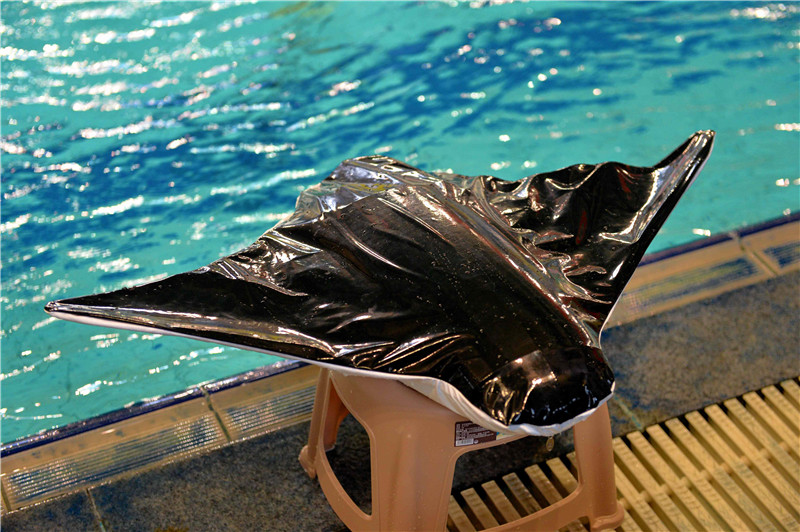
"At present, we have already achieved the flapping, gliding, emergency stop, turning, and other actions of this bionic manta ray, and there is almost no difference with the real manta ray." Yong Cao, who stood on the shore controlling submersible, told reporters.
Manta ray is a cartilage fish that lives in the bottom layer of tropical and subtropical seas. It has a streamlined flat body, which is good for fluttering and diving and can effectively use the energy of the fluid in the motion field. This feature fully satisfies the bionic needs of underwater propellers for long-haul and wide-area operations.
The autonomous underwater vehicle team of the School of Marine Science and Technology of the Northwestern Polytechnical University used high-speed cameras to conduct live-body observation studies on manta rays, and the analysis on the multi-mode high maneuver and high-efficiency motion postures for gliding and fluttering (forward, reverse, yaw, pitch, emergency stop, tumbling, etc). Finally, the team constructed the shape-parameter model and the motion-parameter model of manta ray, and then developed China’s first self-deformation bionic manta ray sliding and flying soft body submersible.
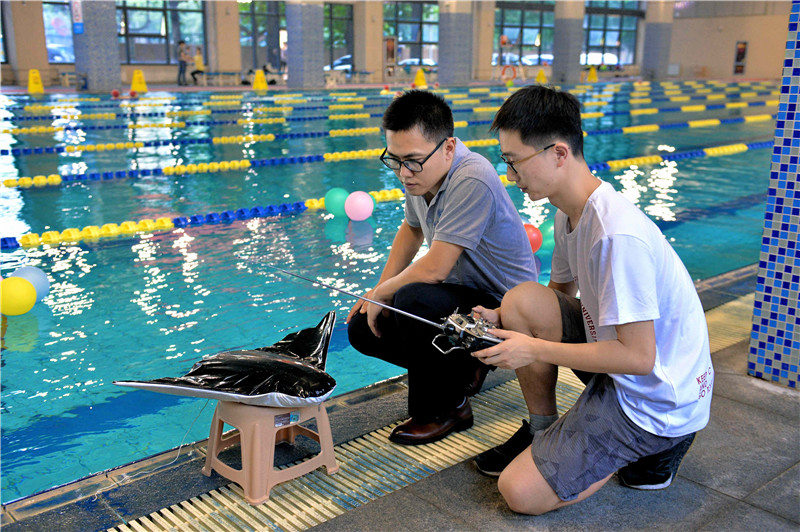
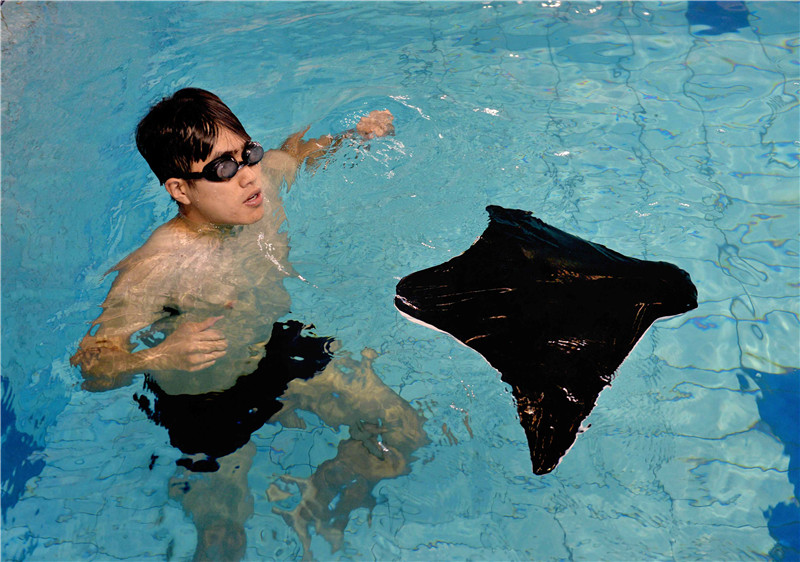
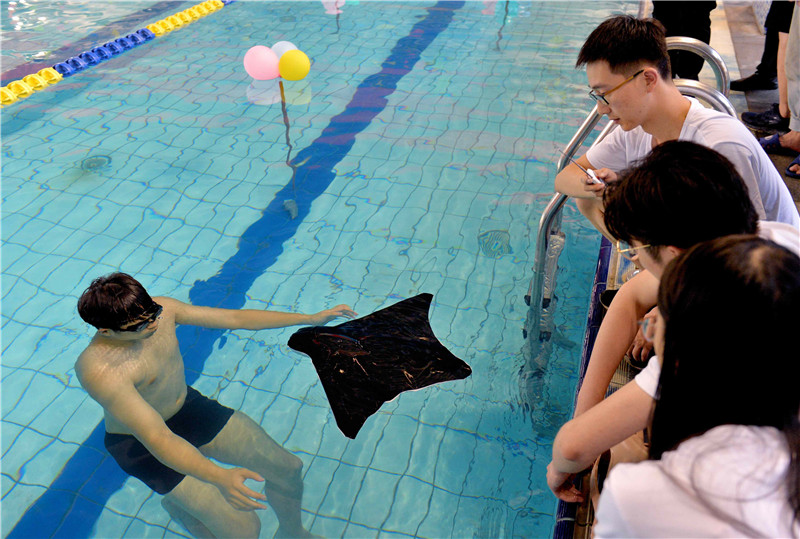
The self-deformation bionic soft-body submersible is a research project supported by the Ministry of Science and Technology. The soft-body submersible developed by the bionic manta movement principle has the characteristics of high propulsion efficiency, high maneuverability, high stability, low environmental disturbance, low noise, large load space, large load capacity, and soft landing of the seafloor, which better meets the demands of the high maneuverability and long endurance for the underwater vehicle.
Professor Guang Pan, the project leader and dean of the School of Marine Science and Technology of the Northwestern Polytechnical University, said that the research team is working on the development of a three-model engineering prototype. Among them, the I-type prototype has a wingspan of 2 meters and adopts a rigid wing to verify the gliding ability. The II-type prototype has a wingspan of 3 meters, and the tip of the wing is flexible, which mainly verifies the ability of gliding-based and flutter-assisted. The III-prototype has a wingspan of 2 meters, and the wing is fully flexible, which mainly verifies the ability of the bio-slipper to advance.
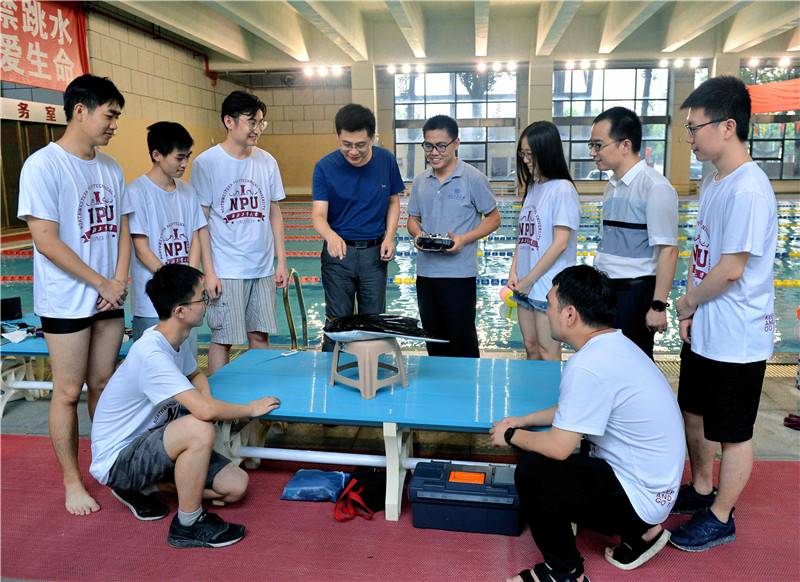
In the next step, the team will install “ears” and “eyes” into the bionic soft body submersible, which will provide environmental sensing and geomorphological observation capabilities for long-term observation of marine environmental information and targets at sea bottom.
Professor Guang Pan says that the team will launch a flexible submersible with a depth of 1000 meters and a sustainable working for one month in the near future. "It will be the same as the manta ray in the sea."